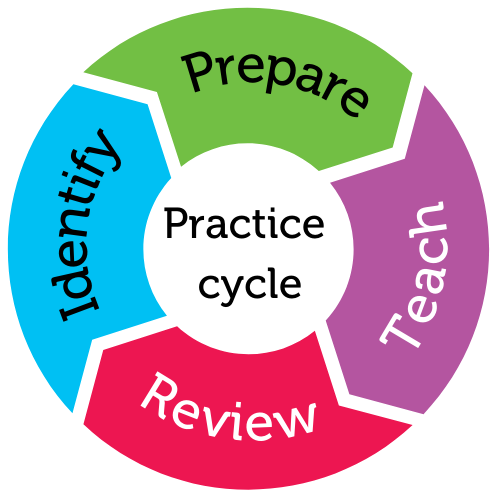
For student year
Helps students to
- identify work-related strengths
- discover career interests
- identify workplace preferences
Helps teachers to
- use myWAY Employability
Summary
Many students need support to set goals and understand their strengths and preferences when it comes to their working life. The Self-discovery unit explores career interests and students' strengths.
Each quiz and activity in myWAY Employability is designed to build the students’ awareness of their career interests and strengths, and how these align with work opportunities. The quizzes don’t need to be completed in a linear way; however, if you’re working through this with a class, it’s best to complete each section together, using the discussion points to trigger conversation and deeper consideration of the topics.
myWAY provides career paths to a range of different jobs wherever you see yourself
Australian Professional Standards for Teachers related to this practice
1.1 - Physical, social and intellectual development and characteristics of students
1.5 - Differentiate teaching to meet the specific learning needs of students across the full range of abilities
1.6 - Strategies to support full participation of students with disability
4.1 - support student participation
For further information, see Australian Professional Standards for Teachers AITSL page
Preparing to teach
Self-discovery walkthrough
The activities and quizzes in this unit will be completed on the myWAY Employability website. There are screenshots of the quizzes and the results pages below to familiarise yourself with the format before taking the class or a student through the process.
There are also discussion starters that expand on some of the topics raised in the quizzes. These aren’t prescriptive. Please adjust them to meet your students’ needs.
Before you begin:
- Open the relevant sections of the myWAY Employability website:
- myWAY Employability website homepage
- myWAY Employability website introductory video
- Prepare resources depending on your chosen discussion starters.
Curriculum alignment
These align with the following standards and capabilities of the Australian Curriculum.
Work Studies Curriculum Standards
-
ACWSCL002: Describe the implications of individual learning preferences for learning at home, school, work and in the community.
-
ACWSCL013: Recognise the importance of self-awareness in career and life design.
-
ACWSCL021: Link personal profiles with potential work opportunities.
-
ACWSCL032: Apply knowledge of self to career decision-making processes.
-
ACWSCL033: Use career decision-making processes to filter career scenarios.
General Capabilities (Personal & Social Capability)
-
Self-awareness: Recognise personal qualities and achievements, understand themselves as learners.
Adjustments for students with diverse abilities
Find notes on making adjustments for students with diverse abilities in the Resources section of this practice. These notes outline how each practice is designed to assist teachers to teach to the diversity within their classroom.
In the classroom
Introduction to myWAY Employability
Students will be introduced to the website and create a login (refer to the practice: Introduction to myWAY Employability for login assistance)
Whole class activity
- Watch the introduction video
- Navigate to the myWAY Employability homepage
- Explain that all students will be using the website over the coming term/year
Remember, the quizzes don’t need to be completed in a linear way; however, if you’re working through this with a class, it’s best to complete each section together, using the discussion points to trigger conversation and deeper consideration of the topics.
Sensory Preferences
The Sensory Preferences section helps students understand what sort of work environment they prefer and what environmental conditions they need in order to concentrate. The Sensory Preferences quiz will raise questions about the workplace environment, lighting, group or solo work, physical activity, and more.
Screenshots
These are examples of the questions page and the results page that you will see in the Sensory Preferences section.
|
|
|
Discussion starters:
- If you have work that requires a lot of concentration, do you prefer silence or listening to loud music? If you couldn’t control the environment, what could you do to meet your sensory needs?
- Would you prefer to meet new people at work every dayor have the same group of people around you? What might be the pros and cons of each situation in a workplace?
- Would you prefer working in the same place every day or in different places? What might be the pros and cons of each?
- Brainstorm different jobs requiring shift work.
- Would you mind wearing safety equipment every day to work? What types of safety equipment would you be comfortable wearing?
Life Skills
The Life Skills section helps students consider the various ‘soft’ skills required in the workplace and flags the skills someone may need to enhance before beginning their work life. The Life Skills quiz will raise questions about transport, preparing meals, managing money, self-regulation, and more.
Screenshots
These are examples of the questions page and the results page that you will see in the Life Skills section.
|
|
|
Discussion starters:
- How could you learn more about managing your money once you start earning money?
- What are some things you could do to manage your time better once you’re working? (e.g. apps, preparing meals ahead of time, scheduling in things on a calendar)
- What are your favourite ways to calm down when you get worried, angry, or upset?
- Roleplay some ways to ask for help when you need it.
Career Exploration
The Career Exploration section helps students establish the types of career areas they’d most enjoy. The Career Exploration quiz offers various activities on a sliding scale for students to rank how much they like or dislike activities. These activities are from categories based on the Holland codes (also known as RIASEC personality types) of organised, helping, enterprising, investigative, artistic, and practical.
Screenshots
These are examples of the questions page and the results page that you will see in the Career Exploration section.
|
|
|
Discussion starters:
- Note that each activity may require further explanation from you as to what the activity requires. For example, participating in a debate could be a formal debate, like what we see in Parliament, or an informal debate, like when you’re disagreeing with a friend.
- If a student doesn’t have experience of a particular activity, open the discussion to the class and seek answers from others based on their experience of the activity. For example, packing for a holiday isn’t a universal experience, but some students may understand the organisation and forward thinking the take requires.
- If no one has experience with a particular activity, brainstorm what would be required, with your input. For example, what would be involved in leading a campaign to reduce homelessness? Think about collaborating with others to come up with ideas, fundraising to fund the project, approaching homelessness organisation to ask what people need, etc.
- Students can access the Read more sections underneath each category to learn more on what each category entails.
My Strengths
The My Strengths section helps students understand what their work-related strengths are by ranking themselves Not like me, A bit like me, or A lot like me. The My Strengths quiz offers various statements and the students can rank themselves on the scale according to how much they align with the statement.
Screenshots
These are examples of the questions page and the results page that you will see in the My Strengths section.
|
|
|
Discussion starters:
- Note some statements may require further explanation from you as to what the activity requires. For example, the student may not have experience with a particular activity, but can imagine they’d enjoy it based on your explanation.
- Brainstorm any non-work-related strengths students have that could still be useful in the workplace. For example, being good at video games could mean a student has a faster hand-eye response rate, are able to multi-task or organise, can keep track of lots of different missions/ projects, etc.
- Ask students: Do you have any strengths you’re surprised about? Any that you’re proud of? Share these with the class.
- Students can access the Read more sections underneath each category to learn more on what each category entails.
Post-school Pathways
The Post-school Pathways section helps students clarify their post-school life intentions and their learning preferences.
Screenshots
These are examples of the questions page and the results page that you will see in the Post-school Pathways section.
|
|
|
Discussion starters:
- What might be the pros and cons of studying straight after school? Of working straight after school? Of taking a gap year straight after school? Discuss what these options might look like or the reasons for taking them.
- Brainstorm careers or jobs that would be more suited to certain learning preferences. For example, those who prefer reading or writing might choose a role that requires these skills on a daily basis, such as journalism or research.
- Students can access the Read more sections underneath each category to learn more on what each category entails.
It works best if ...
- you explain how you will be using the MyWay Employability website in class activities in the coming term/year.
- you demonstrate the various sections of the website and how to navigate betweenthem e.g., the Career Interests and Exploring Strengths sections on the dashboard.
- you encourage discussion from everyone in the class to have a diversity of perspectives.
It doesn't work if...
- students don't have access to a computer to individually log onto the myWAY Employability website.
Practice toolkit
Practice implementation planner template
We know it's not always easy to keep track of what's working and what isn't. So, we've created this template for you to record and reflect on what you're doing to create more inclusive classrooms. The implementation planner contains:
- guidance around goal setting
- a reflection section (what worked, didn’t work, what to change, and next steps)
- prompting questions.
Implementation planner with examples
Set your professional learning goal for:
Self-discovery
Benefits of goal setting
Setting, working towards, and reflecting on goals helps you grow professionally and improve your practice. You can access AITSL learning resources for teachers to learn more about:How to set goals
The Australian Institute for Teaching and School Leadership recommends using the SMART matrix to frame your goal setting.SMART goals refers to goals that are:
- Specific
- Measurable
- Achievable
- Relevant
- Time-phased
Resources
Teacher notes: Making adjustments for students with diverse abilities
Related Practices

Work discovery
TEACHING PRACTICE
For student years
Helps students to
- discover training pathways
- explore work experience
This practice is from the core research project
Learning Cycle

